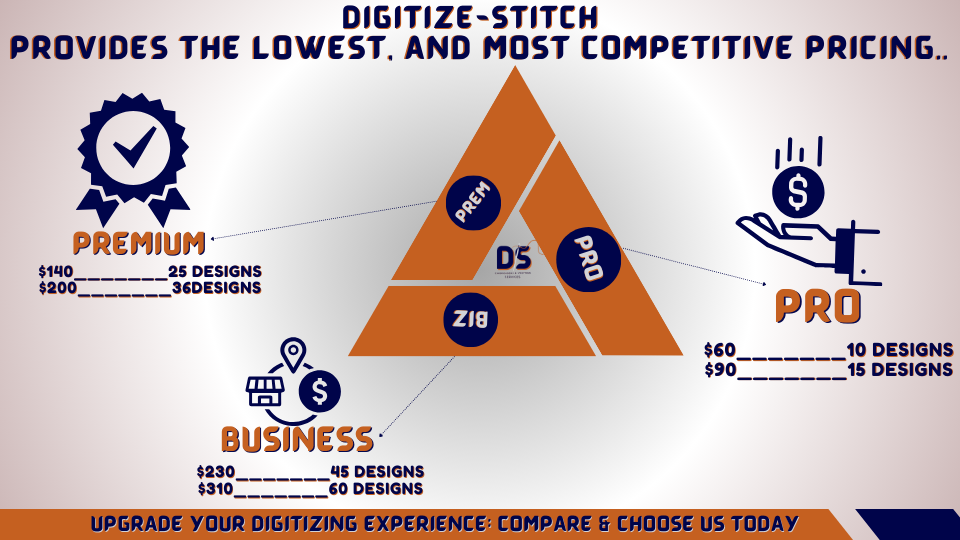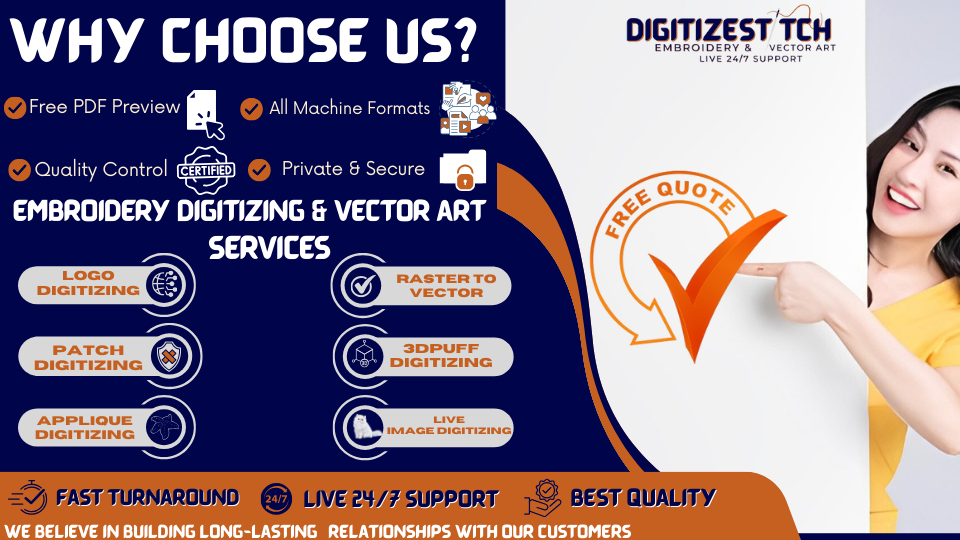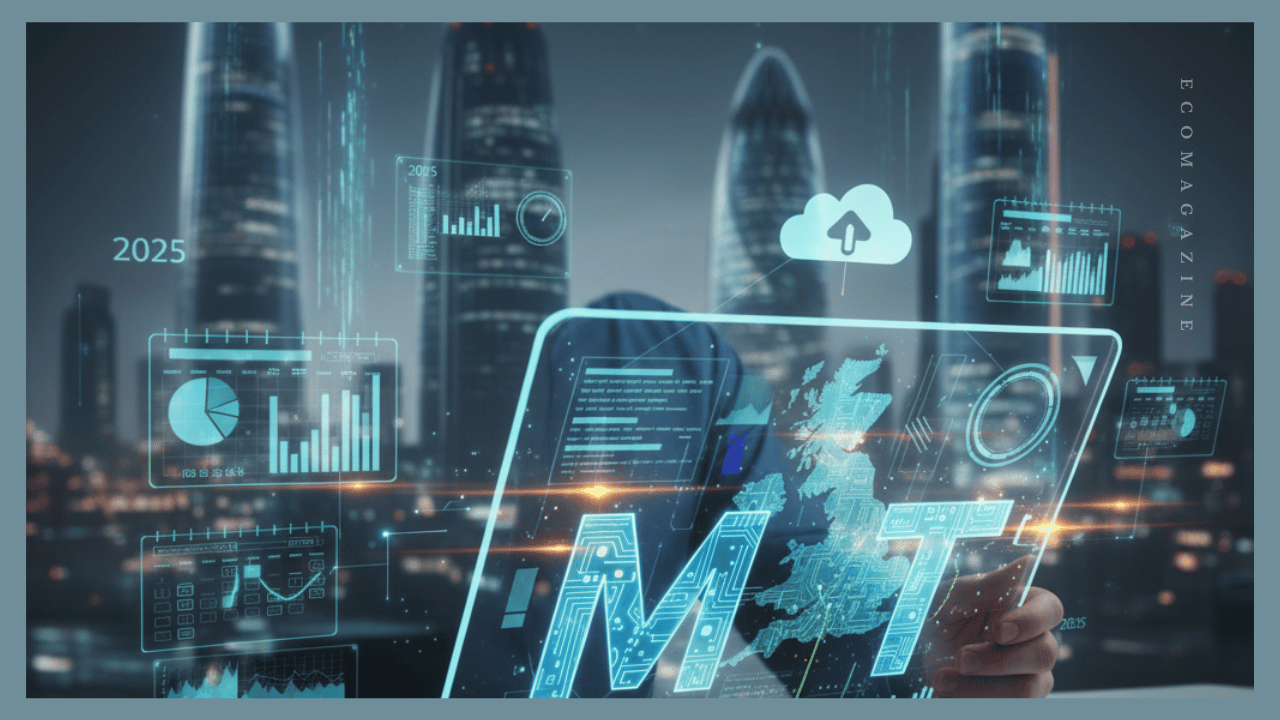If you are new to embroidery or running a custom shop, one of the first questions you will face is: “How much does digitizing cost?” The answer is not always simple because digitizing prices vary from one provider to another. Some companies charge only a few dollars per logo, while others may charge much more. The cost depends on factors like design complexity, stitch count, turnaround time, and the digitizer’s level of experience.
In this article, we will explain what digitizing is, how pricing works, what you can expect to pay, and how to avoid common mistakes when choosing a digitizing service. By the end, you will know exactly how to budget for digitizing and where to get the best value for your money.
What Is Digitizing and Why Does It Matter?
Digitizing is the process of turning artwork into a digital embroidery file. Unlike normal image files such as JPG or PNG, embroidery files (like DST, PES, JEF, or EXP) contain stitch instructions. These instructions tell the machine where to place stitches, what type of stitch to use, how dense the stitching should be, and when to change thread colors.
Good digitizing is more than just tracing a design. A skilled digitizer knows how fabric behaves under stitches, how to prevent puckering, and how to create smooth outlines. For example, satin stitches look beautiful on small lettering, but they are not practical for filling a large area. Likewise, the wrong underlay can make stitches sink into stretchy fabrics like t-shirts.
When digitizing is done well, your machine runs smoothly, stitches look neat, and the final product matches the customer’s expectations. Poor digitizing, on the other hand, can cause thread breaks, uneven coverage, and wasted fabric. This is why digitizing is often seen as the foundation of good embroidery.
Why Do Digitizing Costs Vary?
The price of digitizing is not fixed because each design is different. A simple logo with clean lines and minimal detail might take 20 minutes to digitize, while a complex jacket back with gradients and tiny elements could take hours.
Size also plays a big role. A left-chest logo with 5,000 stitches is much cheaper than a large back design with 60,000 stitches. More stitches mean more time for the digitizer and more processing for your machine.
Turnaround time is another factor. If you need a file in 12 hours or less, you will likely pay a rush fee. Standard turnaround (24–48 hours) is usually cheaper.
Finally, the experience level of the digitizer impacts cost. Professionals who have been in the industry for years and know how to create files that run cleanly will usually charge more than beginners. But their work can save you hours of production time, making the higher price worth it.
Common Pricing Models in Digitizing
Different providers use different pricing systems. Here are the most common ones you will see:
Some companies charge per stitch count. For example, they may charge $1 per 1,000 stitches. That means a 10,000-stitch design would cost around $10. While this seems straightforward, large designs can quickly become expensive.
Others charge a flat rate per design. This is often easier to budget because you know the cost upfront, regardless of stitch count. A simple logo may be $10, while a more complex one could be $40 or more.
There are also subscription models where you pay a monthly fee for unlimited digitizing. This is useful for busy shops that need dozens of designs each month. For instance, a shop might pay $150 per month and get as many files as they need.
Some providers use hybrid pricing, where you pay a base fee and then an additional charge if the stitch count exceeds a certain limit. For example, $20 base plus $1 per 1,000 stitches after 20,000 stitches.
Understanding these models helps you compare services fairly and avoid surprises.
Digitize-Stitch Pricing Made Easy

At DigitizeStitch, we believe in clear and affordable pricing with no hidden costs. The final price depends on the complexity of your design, stitch count, and special techniques required. Here’s what you can generally expect:
Simple Text or Small Icons
Perfect for basic lettering, monograms, or tiny logo marks. These jobs usually cost $8–$13, depending on stitch size and file requirements.
Standard Logos & Vector Art
Business logos or detailed vector art conversions usually range between $10–$25. This option is ideal for brand marks, emblems, or clean line-based designs.
Medium-Level Designs
More complex patterns with moderate detailing fall in the $10–$15 range. These are great for polo shirts, caps, or designs with multiple colors.
Large or Highly Detailed Designs
Jacket backs or designs with heavy stitch counts can go 20-25, depending on size and technique.
Special Techniques (Optional)
If you need 3D puff embroidery, appliqué, or chenille effects, pricing is customized based on the design’s complexity and stitch requirements.
All prices are estimates. Your exact cost depends on the design details, required format, and turnaround time. At DigitizeStitch, we always confirm the price with you before starting the work.
Hidden Costs to Watch Out For
When comparing digitizing services, many beginners only look at the base price. But the base price is not always the full story. Some companies charge extra for revisions, rush delivery, or providing multiple file formats. Others may add setup fees that are not clearly listed upfront.
For example, you might find a service that offers digitizing for $8. But if they charge $5 for every revision, $10 for same-day delivery, and $3 for each additional file format, your total cost may be much higher than expected. This is why transparency in pricing is so important.
How to Save Money without Sacrificing Quality
The good news is that there are ways to reduce digitizing costs while still getting high-quality files. The first step is to simplify your artwork. Designs with fewer colors, larger text, and clean shapes are faster and cheaper to digitize.
Another tip is to provide your digitizer with the best quality artwork you have. A clean vector file (AI, EPS, or SVG) is ideal because it eliminates guesswork. Low-resolution images take longer to trace and may increase the price.
If you run a business, consider bundling designs. Many providers offer discounts for bulk orders. Subscriptions may also make sense if you need a high volume of files each month.
Finally, build a relationship with one reliable digitizer. Consistency not only ensures quality but often leads to better pricing over time.
Why Paying More Can Save You Money
It is tempting to choose the cheapest digitizer, especially if you are new. But embroidery is a production business, and poor digitizing costs you far more in the long run. Bad files can cause constant thread breaks, misalignment, or fabric damage. Each mistake means wasted time, wasted materials, and unhappy customers.
Paying a little more for a skilled digitizer ensures your machine runs smoothly. This reduces production stress and increases customer satisfaction. In other words, good digitizing is not just a cost—it is an investment.
A Trusted Option: DigitizeStitch
If you are looking for a reliable service with transparent pricing at HYPERLINK “https://digitizestitch.com/”DigitizeS HYPERLINK “https://digitizestitch.com/”t HYPERLINK “https://digitizestitch.com/”itch is a great option. They specialize in embroidery digitizing and vector art, offering clear rates and fast turnaround.
Unlike many providers, DigitizeStitch includes multiple file formats, free revisions, and previews before payment. This means you see exactly what you will get before spending a dollar. For busy shops, this reduces risk and saves time.
With affordable flat pricing and professional results, DigitizeStitch is trusted by small businesses, custom shops, and designers who want consistent quality without hidden fees.
Final Thoughts
So, how much does digitizing really cost? For simple designs, you might pay as little as $5. For large, detailed artwork, you may pay $80 or more. The exact price depends on design complexity, size, turnaround time, and the digitizer you choose.
Instead of asking only “What’s the cheapest price?” focus on value. The right digitizer saves you time, prevents machine problems, and delivers files that make your embroidery look professional. That means happier customers and more repeat business.
If you are ready to see how much your logo or artwork will cost, you can request a free quote at HYPERLINK “https://digitizestitch.com/embroidery-free-quote/”DigitizeStitch and get started today.




